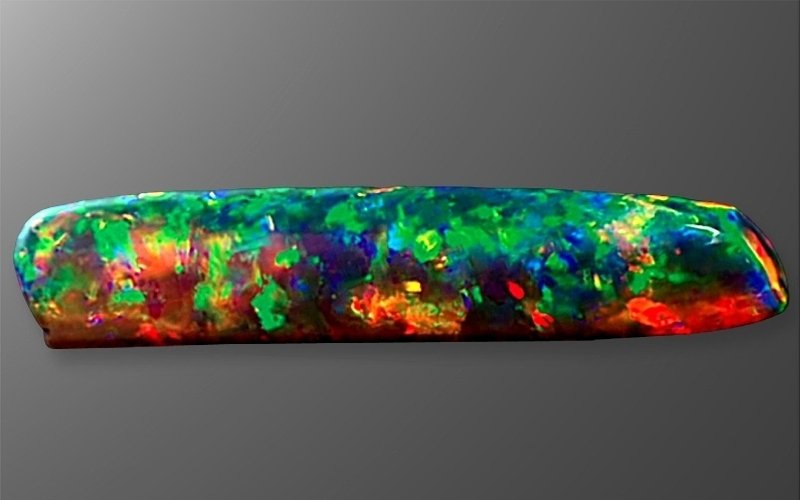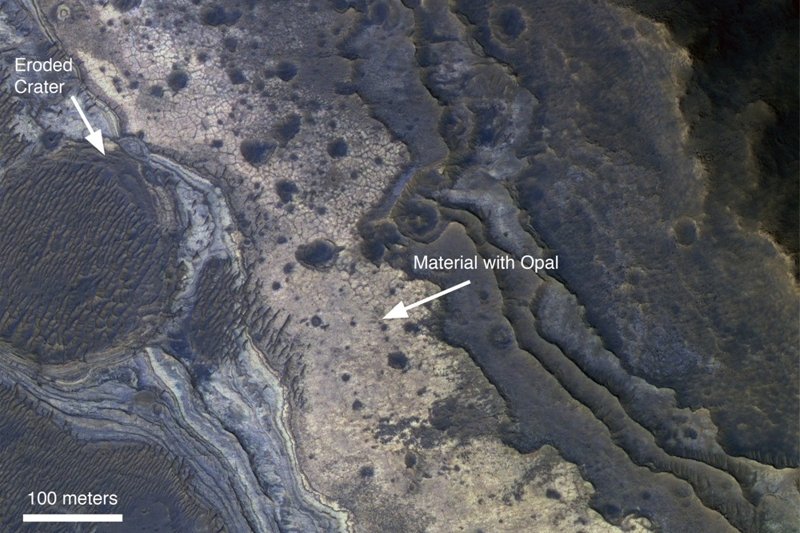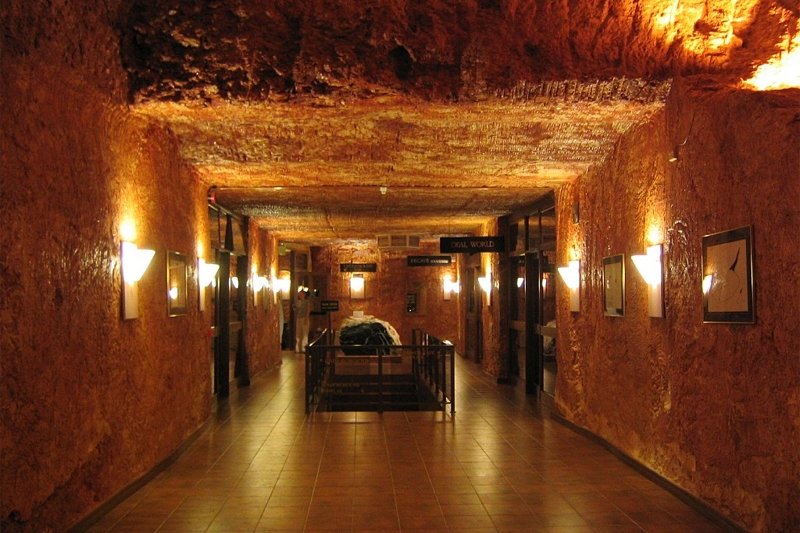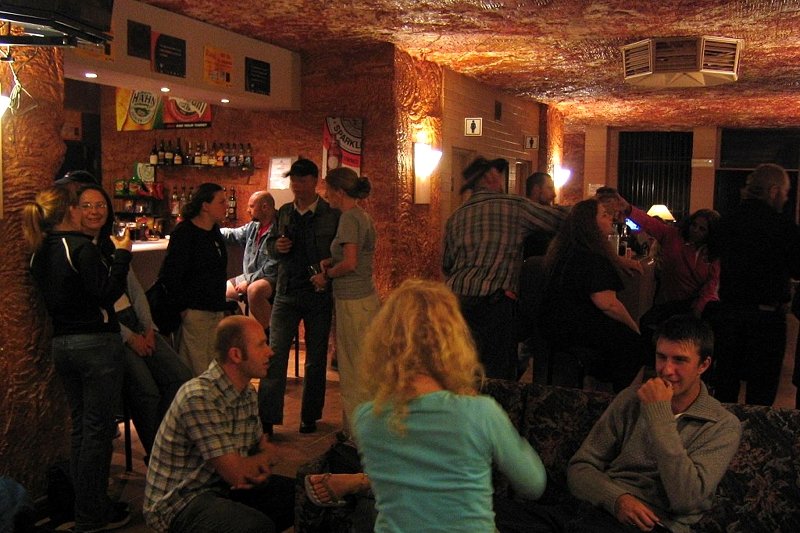Did you know that a novel published in 1829 halved international demand for opals? Or That NASA has found opals on Mars? We’ve prepared some fun facts about opals that we hope you’ll enjoy.
The world's most spectacular opal glows in the dark

The South Australian Museum is home to an the Virgin Rainbow, an opal believed by many to be the most beautiful in existence.
It was discovered in 2003 at Coober Pedy, South Australia, by John Dunstan, an opal miner working alone. He described the stones as “unbelievable”.
In low light, the Virgin Rainbow displays colours so intense and vivid, that it’s said to glow from within.
At first glance, the Virgin Rainbow seems to defy our expectations of a precious opal. An opal is inherently colourless. It is the phenomenon known as opalescence that is responsible for exquisite the play-of-colour that takes place when light is refracted by millions of microscopic silica spheres arranged in an orderly network.
White men in holes?
The Australian opal fields are larger in area than all the opal bearing regions of other countries combined, and Coober Pedy, styled as ‘The Opal Capital of the World’, is by far the world’s largest opal producing district.
When mining commenced at Coober Pedy more than a century ago, local indigenous people referred to the new settlement as kupa-piti, which was understood by the miners to mean ‘white man in a hole’[1]. Coober Pedy is the anglicisation.
Today, as you approach the town there’s little to see, and it’s difficult to discern where it’s population of approximately four thousand people live and work.
They are to be found underground. Coober Pedy is place like no other. It’s dugouts can be truly amazing. You’ll find churches, luxury accommodation, comfortable homes and various commercial ventures carved into the town’s earth walls.
J. R. R. Tolkien could have been describing the dugouts of Coober Pedy when he introduced readers to a hobbit hole.
“In a hole in the ground there lived a hobbit. Not a nasty, dirty, wet hole, filled with the ends of worms and an oozy smell, nor yet a dry, bare, sandy hole with nothing in it to sit down on or to eat: it was a hobbit–hole, and that means comfort.”
Mining operations are also conducted underground. Shafts are sunk, often to a depth of to twenty metres. Miners then excavate horizontal tunnels, always hoping that their great find is only feet away.
NASA discovered opals on Mars

Opal outcrops have been discovered by NASA in a vast, 2.5 billion year old Martian canyon system know as the Vallis Marineris. This has led scientists to conclude that water was interacting with the planet’s surface much more recently than previously believed. Opal is a form of hydrated silica. Where there are opals, there was water.
The CRISM spectrometer detected the opal’s spectral signature from aboard the Mars Reconnaissance Orbiter in 2008[2].
Opal has also been detected further afield in Gusev Crater by the NASA’s Spirit Rover, suggesting that opals may be ubiquitous on Mars.
Scientists believe that the micro-biological implications the opal discovery are particularly significant, and that opal fields may be great places to start hunting for evidence of Martian life.
How a 19th century novel halved the demand for opals
When Sir Walter Scott’s novel, Anne of Geierstein, was published in 1829, the author could not have expected that it would impact the global demand for opals. But, it did just that.
Central to the story is an opal amulet, the property of the Baroness of Arnheim. After a drop of holy water falls upon the opal, its rendered colourless and the baroness dies shortly thereafter.
In the months following the book’s publication, European opal sales plummeted by fifty percent and remained low for decades[4].
It’s broadly accepted that Scott’s novel is the reason opals came to be associated with bad luck. Tales of bad luck and curses linked to opals tend to date from the mid-to-late nineteenth century.
Prior to Scott’s novel, most cultures associated opals with good fortune. In fact, ancient Romans believed that multi-coloured opals were imbued with the virtues of all gemstones whose colours could be found within.
"Opals were created when a rainbow touched the earth"
Ingenious creation stories often link opals to the rainbow serpent – the most prominent creator god – and to rainbows.
Dreamtime stories are set in the “Everywhen” — past, present and future, and they often vary from culture to culture and between men and women. Even so, they are similar in many vital respects.
The dreaming is an indigenous account of creation, a time when rocks, plants animals and people first sprang from the earth. An ‘opal dreaming’ story that tells of opals being created when a rainbow touched the earth has broad appeal[4].
The Rainbow Serpent Opal (3:05 minutes)
The senator who abandoned his family, friends and fortune for an opal
No compilation of folklore and fun facts about opals would be complete without the cautionary tale of Roman senator, Nonius, as documented by 1st Century, naturalist and author, Pliny the Elder[5].
Nonius owned a magnificent opal the size of a hazelnut. It was said to be worth twenty million sesterces.
Mark Antony, coveted the opal and offered to purchase it, but Nonius refused to part with the stone.
Antony, not known for measured responses, proscribed Nonius who fled Rome, “taking with him, out of all his fortune, just this [opal] ring.”
Pliny goes on to express his dismay at the behaviour of both men, all “for the sake of a gem!”
Even so, Pliny, himself, was transfixed by the beauty of opals:
“For in them you shall see the living fire of ruby, the glorious purple of the amethyst, the sea-green of the emerald, all glittering together in an incredible mixture of light.”
According to ancient accounts, Roman’s believed that India was the source of the finest opals. Pliny certainly thought so. This notion was probably propagated by opal vendors to keep their supply chains secret.
Rome’s most valuable opals were almost certainly mined in ancient Hungary. Hungary produced the world’s finest opals until the nineteenth century when opals were discovered in Australia.

References:
1. Keefe, A. and Benedict, M. (2016). See the People Who Live in a Legendary Underground Town. [online] Nationalgeographic.com. Available at: https://www.nationalgeographic.com/photography/proof/2016/09/coober-pedy-opal-mining/ [Accessed 18 Jan. 2020].
2. McKee, M. (2008). Opal hints at persistence of water on Mars. [online] New Scientist. Available at: https://www.newscientist.com/article/dn15061-opal-hints-at-persistence-of-water-on-mars/ [Accessed 19 Jan. 2020].
3. Eckert, A. (1997). A Chronological History and Mythology of Opals. The World of Opals. New York: John Wiley & Sons, pp.53-118.
4. Pmc.gov.au. (n.d.). Australian National Gemstone | Department of the Prime Minister and Cabinet. [online] Available at: https://www.pmc.gov.au/government/australian-national-symbols/australian-national-gemstone [Accessed 3 Jan. 2020].
5. Pliny the Elder. Natural History, XXXVII.81


